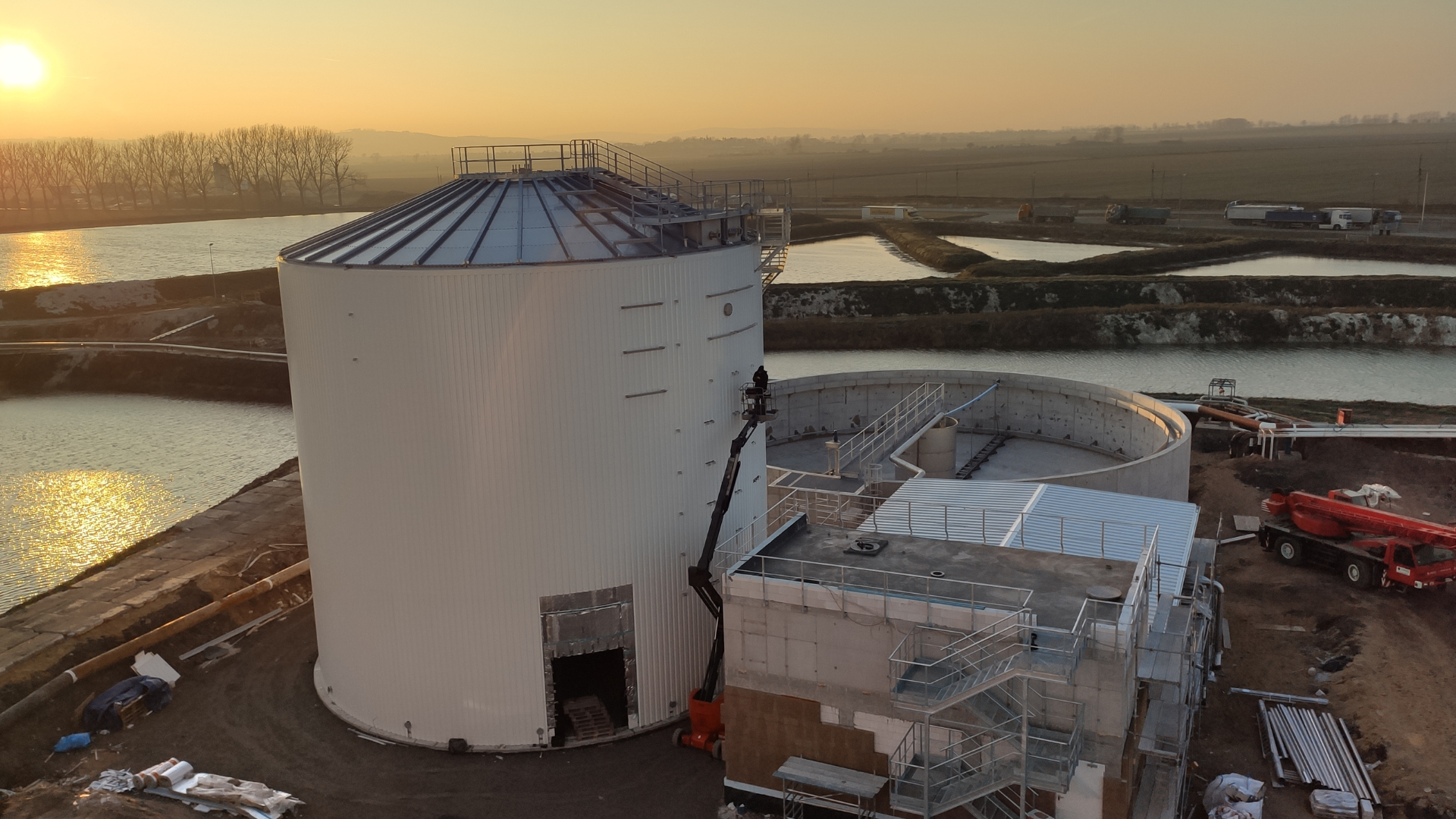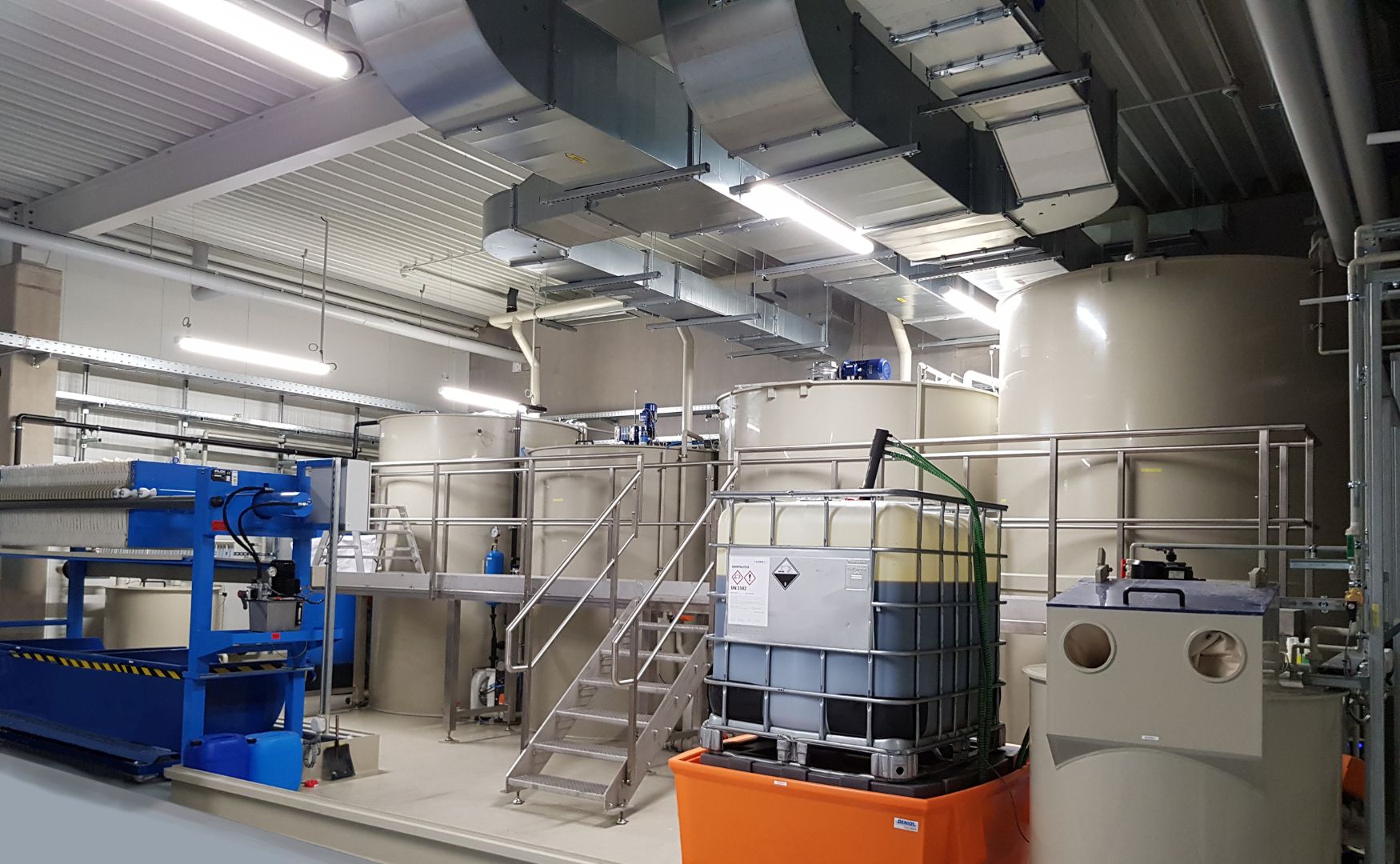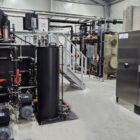The discharge values are important parameters that describe the quality of the treated wastewater that leaves a water or wastewater treatment plant and is discharged into natural bodies of water or the sewage system. These values determine the limit values of pollutants and contaminants that may still be contained in the wastewater after treatment in order to comply with legal requirements and environmental regulations. They are crucial both in industrial water treatment and in wastewater treatment to ensure that the environment is not polluted by harmful substances.
Table of contents
Technical background
In industrial wastewater treatment plants, the wastewater passes through several purification stages in order to remove organic and inorganic pollutants, dissolved substances, suspended solids, nutrients and chemical compounds or to reduce them to a permissible limit value. The discharge values define which concentration of pollutants is still permissible after final treatment. These values depend on the type of industry, the chemicals used, the local legal regulations and the sensitivity of the receiving water body.
Typical parameters of expiration values
Discharge values are described by various parameters that quantify the load of pollutants in the wastewater and its impact on the environment. The most important parameters include
Biochemical oxygen demand (BOD5):
BOD5 measures the amount of oxygen required by microorganisms over a period of five days to break down organic substances in wastewater. A low BOD5 value indicates that the wastewater has been cleaned well and contains little organic contamination.Chemical oxygen demand (COD):
The COD indicates the amount of oxygen that is chemically required to oxidize all organic compounds present in the wastewater. The COD value indicates the total amount of oxidizable substances in the wastewater, including organic substances that are difficult to break down.Total suspended solids (TSS):
The total suspended solids (TSS) content describes the amount of particles that are undissolved in the wastewater and must be removed by filtration or sedimentation. These particles can be organic or inorganic in nature and are a critical parameter as they can cause turbidity and damage to aquatic organisms.Nitrogen and phosphorus compounds:
Ammonium (NH₄⁺), nitrate (NO₃-) and phosphate (PO₄³-) are important parameters, as high concentrations of these nutrients can lead to eutrophication in bodies of water. Insufficient removal of these substances from wastewater can lead to excessive algae growth, which reduces the oxygen content in the water and disturbs the ecological balance.Heavy metals:
Heavy metals such as lead (Pb), cadmium (Cd), mercury (Hg) or zinc (Zn) may only be present in very low concentrations in the effluent, as they are toxic to aquatic life and humans. Industrial wastewater from metal processing or electroplating often contains heavy metals that must be removed by chemical precipitation or filtration.pH value:
The pH value of the discharge water must be within a certain range, typically between 6.5 and 9.0, to ensure that the water does not have a harmful effect on the flora and fauna of the body of water into which it is discharged. Extremely acidic or alkaline wastewater must be adjusted by neutralization processes prior to discharge.Organic compounds (e.g. hydrocarbons, surfactants):
Wastewater from the chemical or petrochemical industry often contains organic compounds that are difficult to break down and can have toxic effects. These substances are regulated in effluent values in order to minimize environmental pollution. Methods such as activated carbon filtration (e.g. ALMA FIL AK) or chemical oxidation are used to remove such substances.
Importance of discharge values for the design of wastewater treatment plants
Compliance with discharge values is a key challenge in the planning and design of wastewater treatment plants. The type and complexity of wastewater treatment depends heavily on the required effluent values. This influences several factors:
Plant design:
The specified discharge values determine which technical processes and treatment steps need to be integrated into the plant. For example, the reduction of nitrogen and phosphorus requires the implementation of biological denitrification and precipitation processes, while heavy metals must be removed by chemical precipitation and filtration.Purification stages:
In many cases, several purification stages are required to achieve the discharge values. Typical plants use a combination of mechanical pre-treatment, biological treatment, chemical-physical treatment and tertiary treatment (e.g. filtration or activated carbon). Plants that have to meet strict effluent values are often equipped with advanced treatment processes such as membrane filtration (e.g. ALMA MEM MF/UF) or ozonation.Monitoring and automation:
Monitoring systems and automatic control techniques are required to ensure that discharge values are continuously maintained. Sensors monitor the pH value, turbidity, COD and other parameters in real time and control the dosing of chemicals or the adjustment of processes such as aeration in aeration tanks. This ensures continuous compliance with legal requirements.Adaptation to fluctuations:
In practice, wastewater flows and their composition can fluctuate greatly. Plants must therefore be designed flexibly in order to maintain the discharge values even with peak loads or varying wastewater flows. Buffer tanks, intermediate storage and dynamic process adjustments are used for this purpose.
Practical examples
1. food industry
The food industry produces wastewater that contains high concentrations of organic substances and nutrients. Typical discharge values concern BOD5, COD and the concentration of nitrogen and phosphorus compounds. The systems must be designed to efficiently reduce these nutrients and organic compounds in order to minimize water pollution.

Photo: Biogas plant for waste water from sugar production with post-treatment(ALMA BHU GMR)
2. metalworking industry
Wastewater from metal processing often contains heavy metals such as copper or zinc. Compliance with the discharge values for heavy metals requires special chemical precipitation and flocculation processes to ensure that the toxic metals are reduced to a harmless level.

Photo: Precipitation and flocculation plant for the removal of heavy metals from wastewater from the production of functional metal materials(ALMA CHEM MCW)
3. municipal wastewater treatment plants
In municipal wastewater treatment plants, the focus is on the reduction of organic substances, nutrients and suspended solids. Compliance with the effluent values for BOD5 and COD is crucial in order to meet the requirements of the Wastewater Ordinance and discharge the treated water in an environmentally friendly manner.
Conclusion
Effluent values are decisive parameters in industrial wastewater treatment that define the quality of the treated wastewater and ensure that no harmful substances are released into the environment. Compliance with these values determines the complexity and design of wastewater treatment plants. The implementation of multi-stage purification processes, monitoring systems and advanced technologies ensures that wastewater is treated to meet legal requirements and protect the environment.








